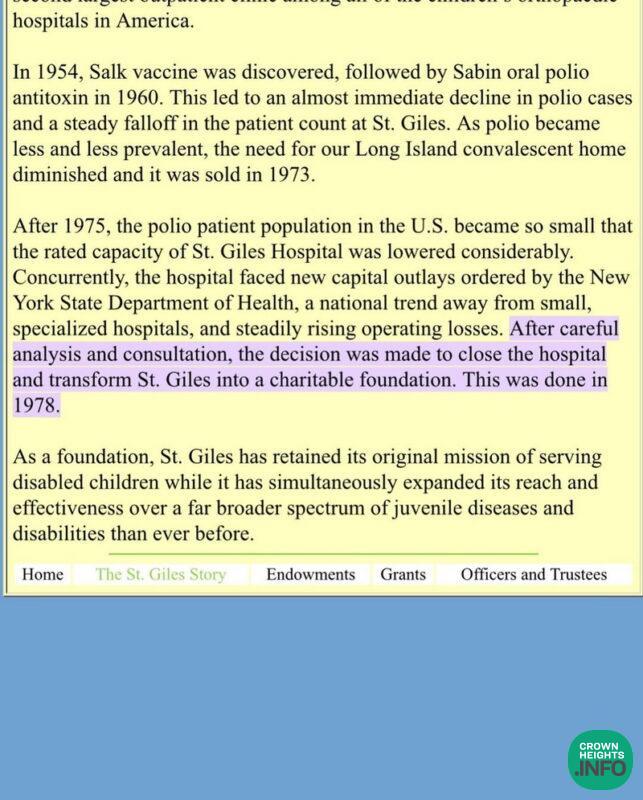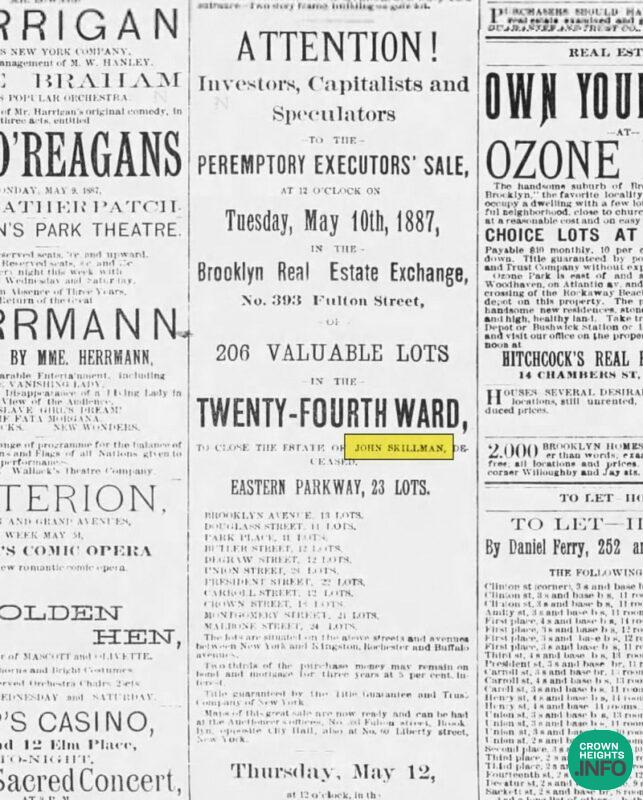
Crown Heights History: The Curious Case of Brooklyn Avenue
by Crown Heights Historian Shmully Blesofsky VIA his Instagram account History of Crown Heights.
The Skillman Family was an established family in the city of Brooklyn mainly presiding in the Bushwick area.
In 1887, after his passing, the John Skillman farm was sold off. This was not his primary residence; this land was on the outskirts of the city of Brooklyn. In 1898 The Eastern Parkway Company purchased surrounding properties but couldn’t acquire what was the Skillman Farm.

Before major development took place there was a tavern on the corner of Brooklyn Ave and Union Street, and a building between Crown and Carroll. The early sale of this farm later allowed a Hospital to be built on President Street and Brooklyn Avenue – Saint Marks school today.


Because the Eastern Parkway Company’s was not able to purchase that corner lot it was exempted from President Street’s restrictions of one house per lot.
In 1914, neighbors rallied in court, backed by Frederick Rowe, a local developer who himself lived on Brooklyn Avenue and Union Street. Rowe felt compelled to safeguard his prior real estate sales.

Despite their efforts, the court ruled in favor of constructing House of St. Giles the Cripple in 1914. In 1978 the building was up for sale, and purchased by Saint Marks School mostly due to infighting from competing Lubavitch schools.

This is an interesting chapter of the era we will call “predevelopment”, yet post the squatters era or established farmers era. Fascinating to find out what was Crown Heights before it was Crown Heights.















Anonymous
Thank you for that interesting and apropo look back to Brooklyn Ave in the 19th century. Looks like the bicycles (Citi-Bikes) are coming back to Brooklyn Ave.
I wonder if NYC’s Vision Zero means getting rid of carbon producing cars and going back to the horse and buggy ?
https://www.bklynlibrary.org/blog/2014/05/19/brooklyn-cycling
Syracuse Ave?
The Avenues from New York to Buffalo follow the NY state thruway. However they skip the city with the most exits on the thruway. It’s between Utica & Rochester: Syracuse! Does anyone know why?
AH
Because at the time that the streets were first platted, in the 1830s, they were named for cities along the route of the Erie Canal. And at that time Syracuse was just a village.
Fairfax Avenue
I’m intrigued by the name of the developer, Frederick Rowe. When my late uncles shortened their last name – Meyrowitz – they chose the name Rowe. Were they hoping his success would reflect on them? They grew up on Park, north of Eastern Parkway and the family lived there from the late 1910s until after World War 2.
shmully
I am trying to find out as much as I can about him. that’s an interesting connection.
The question would be that they know about him at all like was he known only in the real estate circles or did every day people know about them. I know that he took great pride in Crown Heights and he showed people personally showed people the houses on Union Street and always make sure to tell them that it was